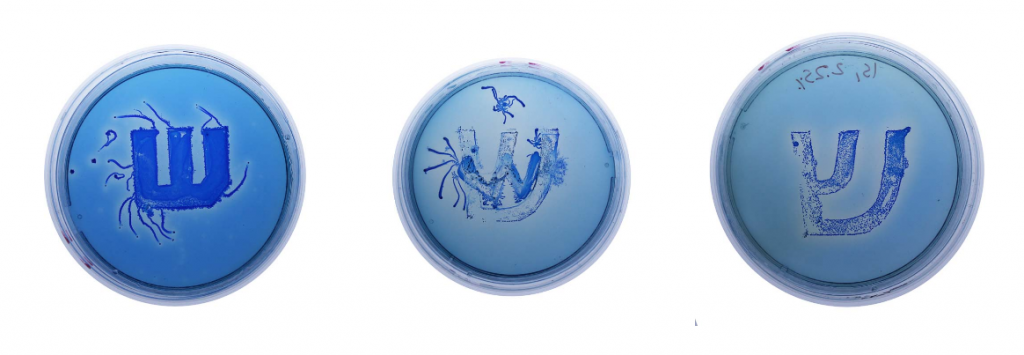Ori Elisar is an Israeli artist working on Biodesign. His globally-acclaimed project uses bacteria to create living typography that changes over time to represent the evolution of the Hebrew language.
The Living Language project uses Paenibacillus vortex bacteria to create living typography. To represent the evolution of the Hebrew language, the artist makes bacteria grow from ancient paleo letter forms to the shapes of the modern alphabet. The experiments were carried out in the microbiology laboratory at Tel Aviv University.
How is this possible? First, the bacteria are placed on a petri dish with the initial shape using a mold. Then, Ori puts nutrients for the bacteria in the pattern of the final sign. The result is that bacteria move across the dish to reach food and the type changes over time.

The petri dishes are dyed blue because of its symbolic meaning for freedom and liberty. However, by playing with temperature and the amounts of bacteria and food, the artist can fully control the visual results of his piece:
The bacteria live in a free space, fighting for territory and food, controlling their surroundings. But actually, they live in a petri dish, a small one. They grow in shapes I placed them in and in the timing that I’ve set. I’m their God.“
From the author’s perspective, this clash between freedom and the rules that limit reality can also be found in the Hebrew language as well as human society.

Earlier this month, Ori Elisar ran a workshop at the Kikk Festival in Belgium, where participants used Physarum polycephalum, a slimy yellow microorganism, to experiment with Biodesign and take their petri dishes home.
It’s exciting to see how microorganisms are taking over art; since their growth can be easily controlled, they’ve been used for everything imaginable, from stained glass and lace to representing utopic futures. What else will the brilliant minds of bioartists bring in the future? We’ll keep you updated.
All pictures by the artist, Oli Elisar





